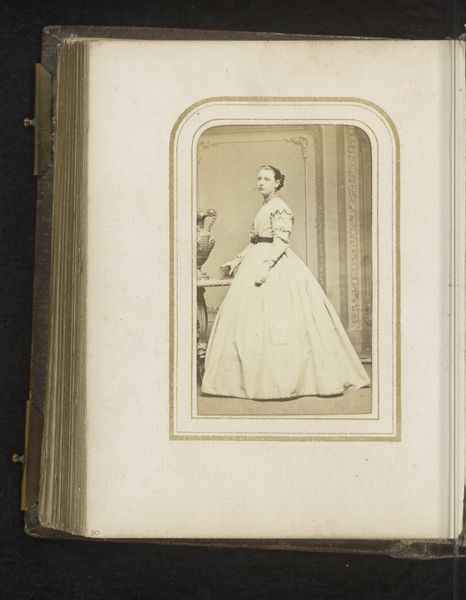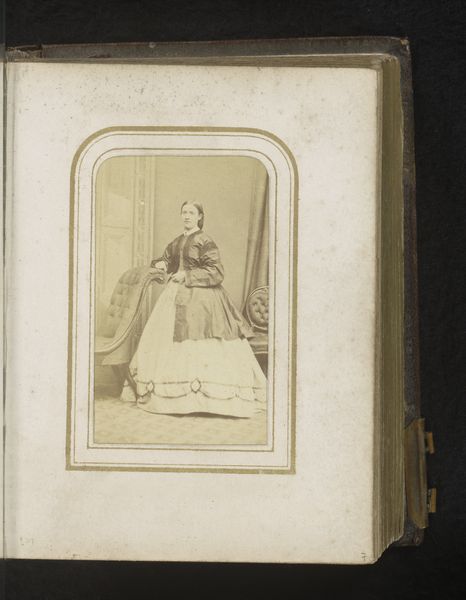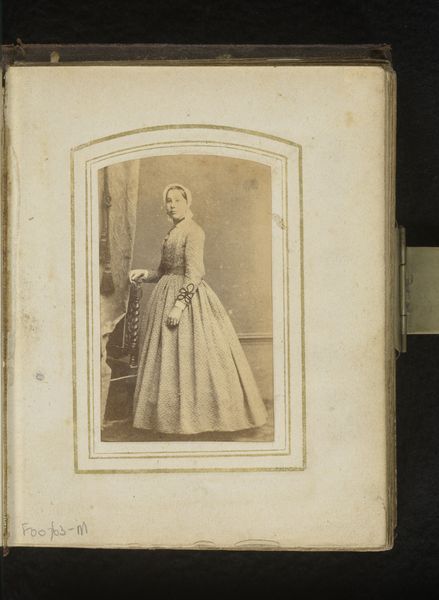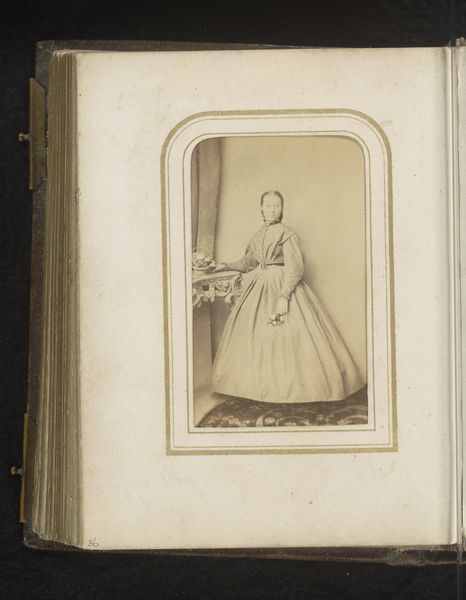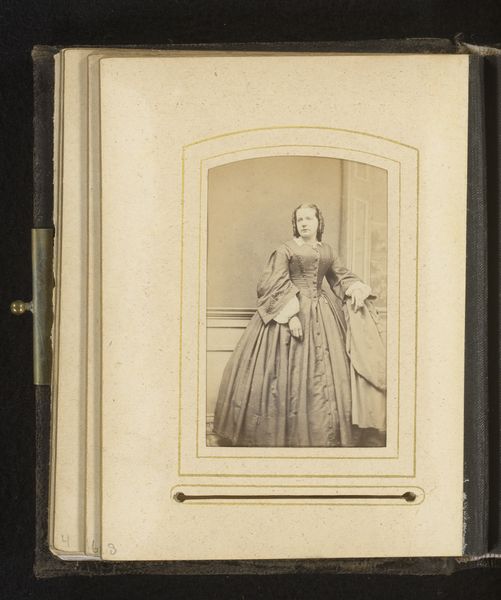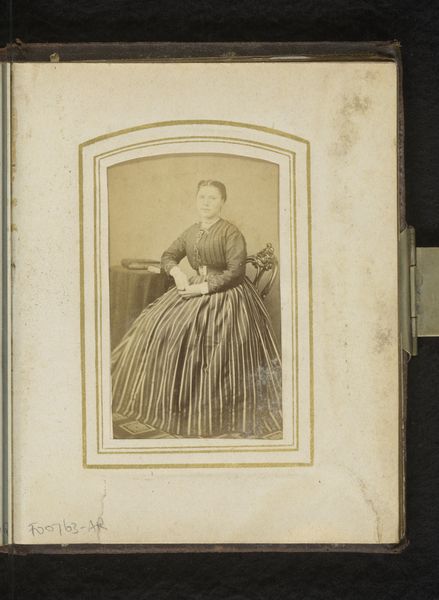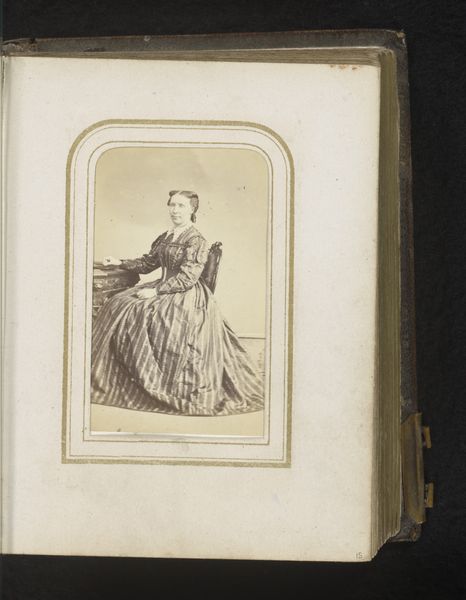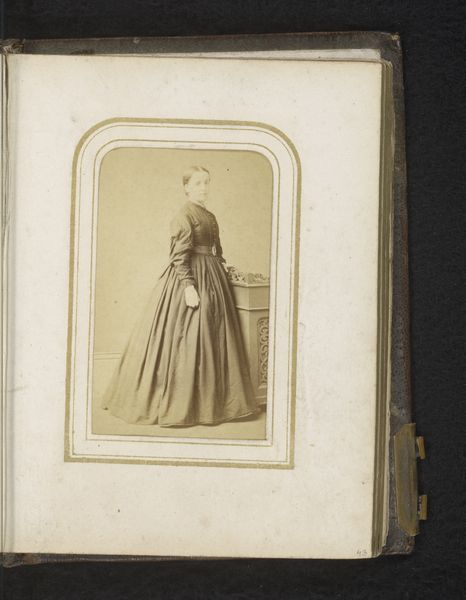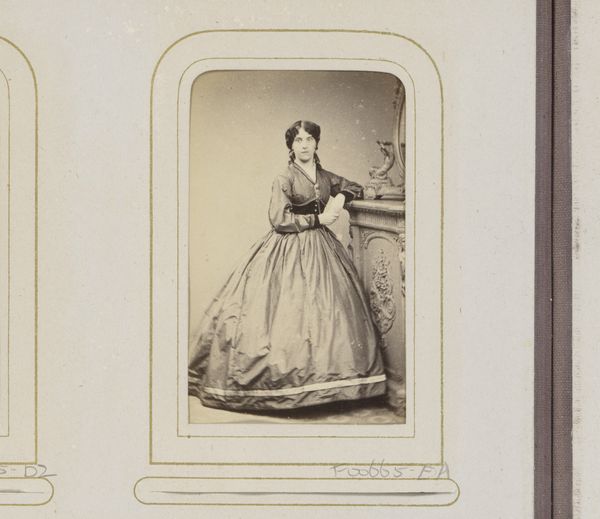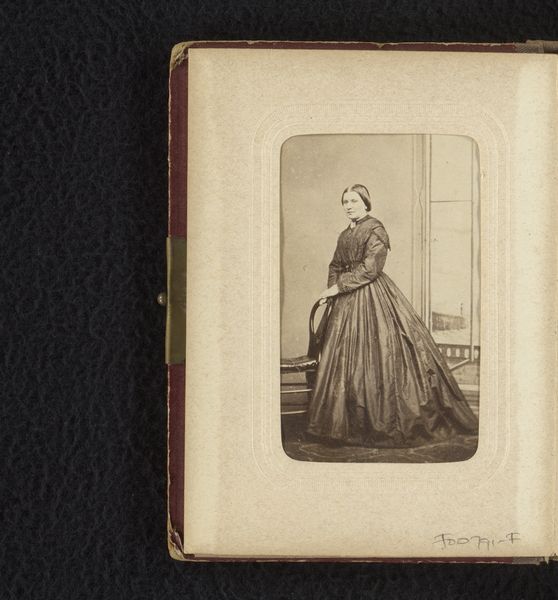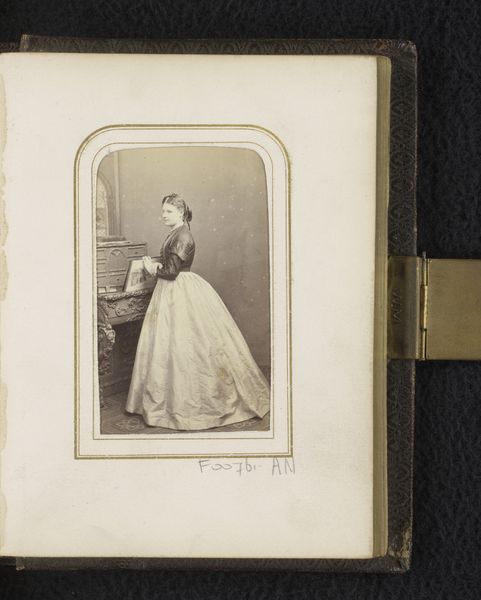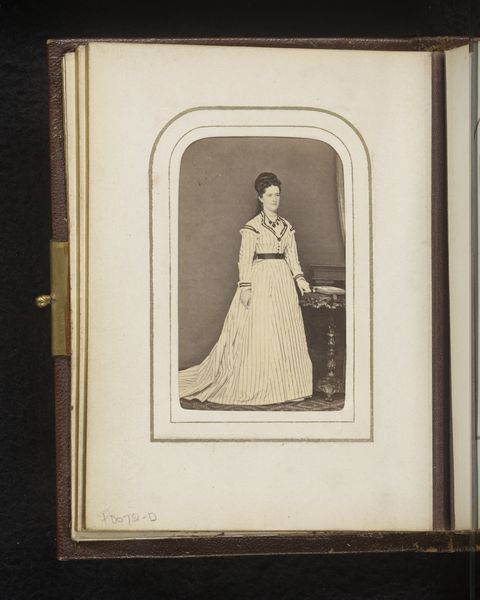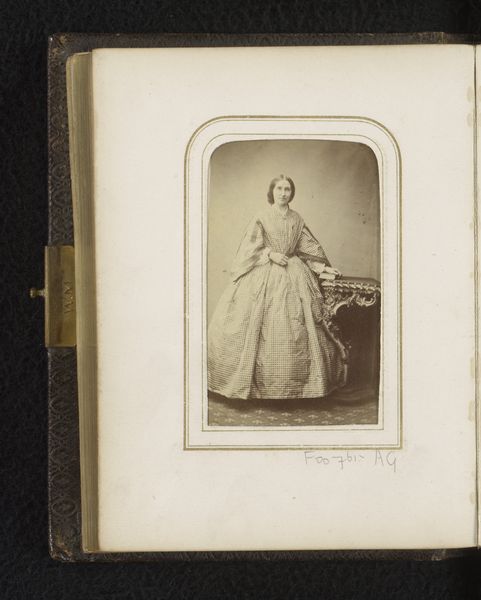
photography
#
portrait
#
photography
#
realism
Dimensions: height 106 mm, width 64 mm
Copyright: Rijks Museum: Open Domain
This is a photograph of a young woman, created by André-Adolphe-Eugène Disdéri, using the 19th-century technique of albumen print. The albumen process, invented in 1850, used egg whites to bind the photographic chemicals to the paper. It gave images a distinctive gloss and fine detail. This one, though faded, hints at the material properties that would have made it so appealing: the smooth surface, and the almost porcelain-like tonality it gave to skin. The making of albumen prints was labor intensive, requiring careful preparation of the paper, precise timing during exposure, and skilled manipulation in the darkroom. This image reflects the rise of photography as both an art form and a commercial enterprise. Studios like Disdéri’s mass-produced portraits for a burgeoning middle class, eager to participate in modern visual culture. The very act of posing for such a portrait speaks to new forms of labor, leisure, and self-representation in the industrial age. It reminds us that even seemingly simple images can carry a wealth of social and material history.
Comments
No comments
Be the first to comment and join the conversation on the ultimate creative platform.
